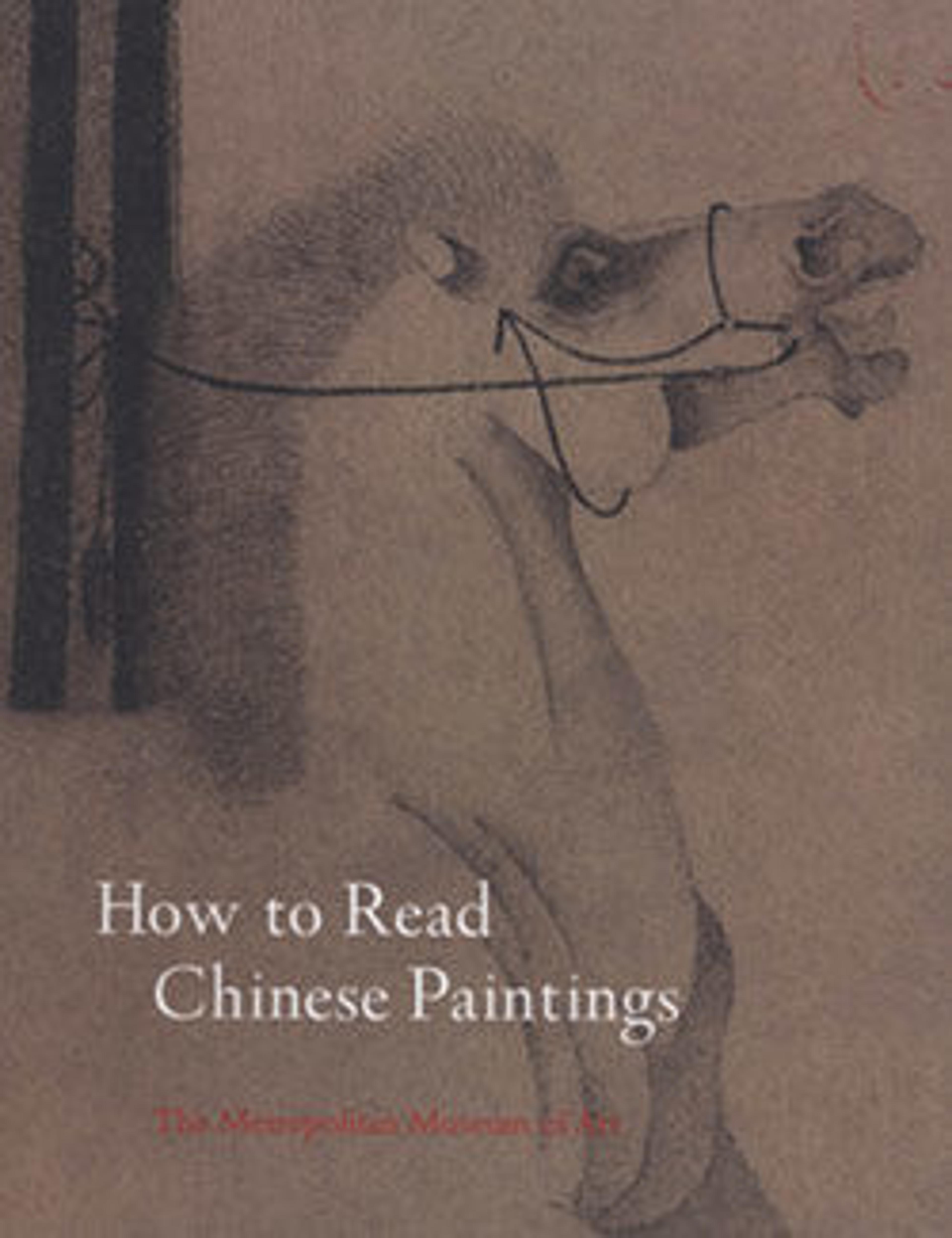Mountain Market, Clearing Mist
This album leaf presents a poetic evocation of one of the Eight Views of the Xiao and Xiang Rivers. The Eight Views became a popular subject for painters beginning in the late eleventh century after the Chan (Japanese: Zen) Buddhist monk Huihong (1071–1128) composed eight poems on these themes. His poem "Mountain Market, Clear with Rising Mist" offers vivid images for painters to interpret:
Last night's rain is letting up, mountain air is heavy,
Steam rising, sun and shadow, shifting light
amid trees;
The silkworm market comes to a close, the crowd
thins out,
Roadside willows by the market bridge: golden
threads play;
Whose house with flower-filled plot is across
the valley?
A smooth-tongued yellow bird calls in spring breeze;
Wine flag in hazy distance-look and you can see:
It's the one west of the road to Zhe Tree Reidge
Valley.
(Alfreda Murck, trans., in Images of the Mind
[Princeton: The Art Museum, Princeton University, 1984], p. 226)
In Xia Gui's interpretation, boldly executed brushstrokes and ink dots create an abstract language of visual signs rather than merely descriptive forms: the kinesthetic brushstrokes, which change effortlessly from outlines and foliage dots to wedge-shaped modeling strokes and ink wash, at once simplify and unify the landscape and human forms, breathing life into the moisture-drenched landscape. It was this brilliantly simplified idiom of ink wash and ax-cut brush that infused gesture with meaning, preparing the way for the expressive calligraphic revolution of the ensuing Yuan dynasty.
Last night's rain is letting up, mountain air is heavy,
Steam rising, sun and shadow, shifting light
amid trees;
The silkworm market comes to a close, the crowd
thins out,
Roadside willows by the market bridge: golden
threads play;
Whose house with flower-filled plot is across
the valley?
A smooth-tongued yellow bird calls in spring breeze;
Wine flag in hazy distance-look and you can see:
It's the one west of the road to Zhe Tree Reidge
Valley.
(Alfreda Murck, trans., in Images of the Mind
[Princeton: The Art Museum, Princeton University, 1984], p. 226)
In Xia Gui's interpretation, boldly executed brushstrokes and ink dots create an abstract language of visual signs rather than merely descriptive forms: the kinesthetic brushstrokes, which change effortlessly from outlines and foliage dots to wedge-shaped modeling strokes and ink wash, at once simplify and unify the landscape and human forms, breathing life into the moisture-drenched landscape. It was this brilliantly simplified idiom of ink wash and ax-cut brush that infused gesture with meaning, preparing the way for the expressive calligraphic revolution of the ensuing Yuan dynasty.
Artwork Details
- 南宋 夏珪 山市晴嵐圖 冊頁
- Title: Mountain Market, Clearing Mist
- Artist: Xia Gui (Chinese, active ca. 1195–1230)
- Period: Southern Song dynasty (1127–1279)
- Date: early 13th century
- Culture: China
- Medium: Album leaf; ink on silk
- Dimensions: 9 3/4 x 8 3/8 in. (24.8 x 21.3 cm)
- Classification: Paintings
- Credit Line: John Stewart Kennedy Fund, 1913
- Object Number: 13.100.102
- Curatorial Department: Asian Art
Audio
7707. Mountain Market, Clear with Rising Mist
0:00
0:00
We're sorry, the transcript for this audio track is not available at this time. Please email info@metmuseum.org to request a transcript for this track.
More Artwork
Research Resources
The Met provides unparalleled resources for research and welcomes an international community of students and scholars. The Met's Open Access API is where creators and researchers can connect to the The Met collection. Open Access data and public domain images are available for unrestricted commercial and noncommercial use without permission or fee.
To request images under copyright and other restrictions, please use this Image Request form.
Feedback
We continue to research and examine historical and cultural context for objects in The Met collection. If you have comments or questions about this object record, please contact us using the form below. The Museum looks forward to receiving your comments.
